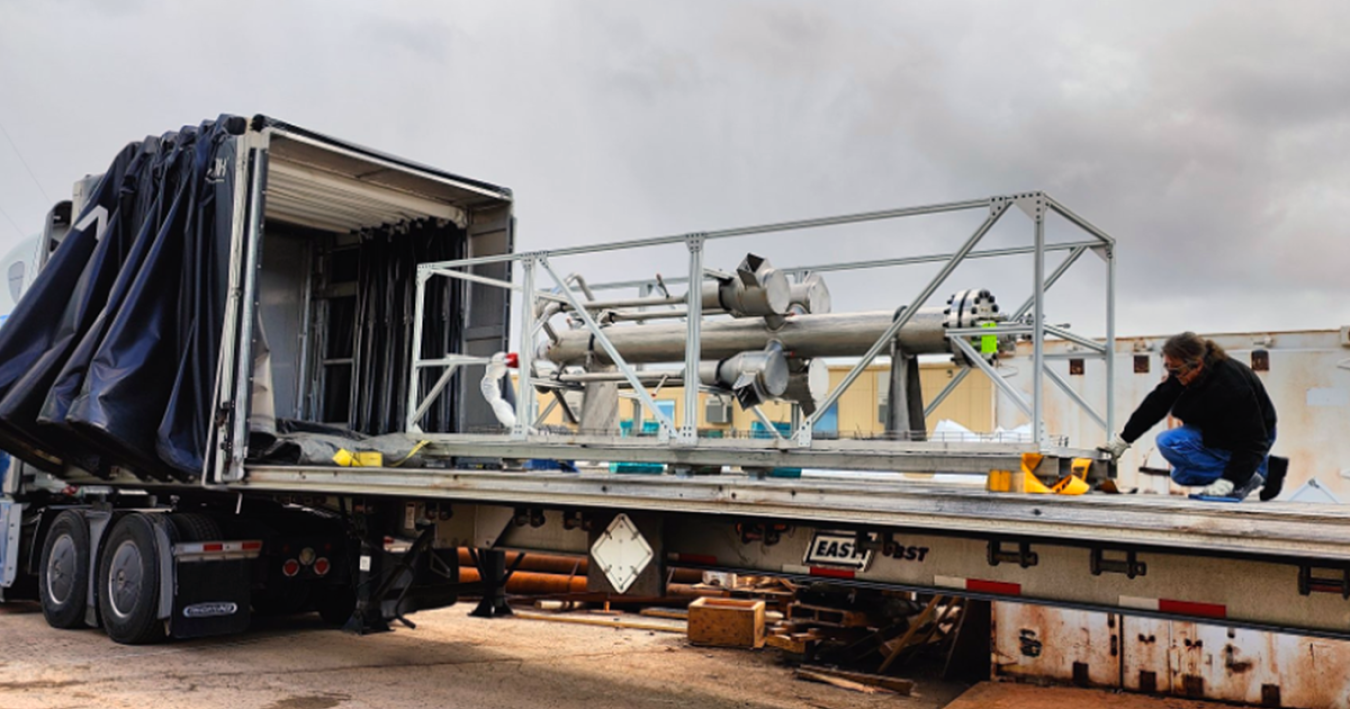 An electric-powered prototype of one of the US Department of Energy’s (DOE’s) Marvel microreactors has been installed at a manufacturing facility in Pennsylvania and is gearing up for testing. The non-nuclear prototype, which is a full-scale replica of microreactor, stands 12 feet tall and weighs 2,000 pounds. The installation was completed by Creative Engineers Inc (CEI).
An electric-powered prototype of one of the US Department of Energy’s (DOE’s) Marvel microreactors has been installed at a manufacturing facility in Pennsylvania and is gearing up for testing. The non-nuclear prototype, which is a full-scale replica of microreactor, stands 12 feet tall and weighs 2,000 pounds. The installation was completed by Creative Engineers Inc (CEI).
Marvel will be the first new test reactor at Idaho National Laboratory (INL) in more than four decades. The Microreactor Applications Research Validation & Evaluation (Marvel) Project entails the design, development, construction, and start-up of an INL test microreactor, funded by DOE through the Microreactor Programme (MRP). The aim is to establish an operational nuclear applications test bed that can generate combined heat and power to enable integration and R&D with end-user technologies. It will also allow microreactor technologists to test next-generation control systems.
The microreactor is a thermal reactor utilising Uranium Zirconium Hydride (UZrH) fuel with review and authorisation by the DOE Idaho Operations Office (DOE-ID) for National Environmental Policy Act (NEPA) compliance, safety review, and supplemental readiness assessments for start-up and operation. To speed up deployment, Marvel will be established in INL’s Transient Reactor Test (Treat) Facility making use of existing operating Category B reactor facility, approved facility safety basis, operating crews, and recent re-start experience.
The Marvel team consists of Idaho INL, Argonne National Laboratory, Los Alamos National Laboratory, Walsh Engineering, Qnergy, Munro & Associates, and CEI. The DOE Microreactor Programme supports research and development (R&D) of technologies related to the development, demonstration, and deployment of very small, factory-fabricated, transportable reactors to provide power and heat for decentralised generation in civilian, industrial, and DOE has conducted an environmental assessment (EA) as part of the NEPA process, which analysed the potential environmental impacts of constructing Marvel inside INL’s Transient Reactor Test Facility. DOE has issued a final EA with a “finding of no significant impact” for the project. A safety design strategy has also been approved by DOE. Marvel is currently in Final Design Phase, with 90% construction planned to conclude in in 2023, and fuel load and initial criticality in 2024.
INL built the full-scale, electrically heated prototype, known as the primary coolant apparatus test or PCAT, last year. It was recently loaded onto a truck and transported from INL to CEI’s manufacturing facility in New Freedom, Pennsylvania. CEI installed the PCAT into a two-story frame and where it will be loaded with sodium-potassium and lead-bismuth coolants.
PCAT will be electrically powered during testing, instead of using fission, where data will be collected on the system's temperatures, and coolant flow. The information will ensure the accuracy of Marvel’s modelling and simulation tools. The system will probably remain at CEI until the operation of Marvel begins to provide further simulation and testing. Once the microreactor is active, PCAT may be returned to INL to be used for additional research to help advance microreactor technologies.
“Validation of our physics models is critical to nuclear quality assurance for any new reactor development project,” said Yasir Arafat, Marvel Chief Design and Project Lead. “PCAT will generate this first-of-a kind-data for validating our thermal-hydraulics simulation tools and quantifying uncertainty for liquid metal thermal reactors, like Marvel.”
Image: Idaho National Laboratory prepares to ship PCAT by truck to Pennsylvania for testing (courtesy of INL)


